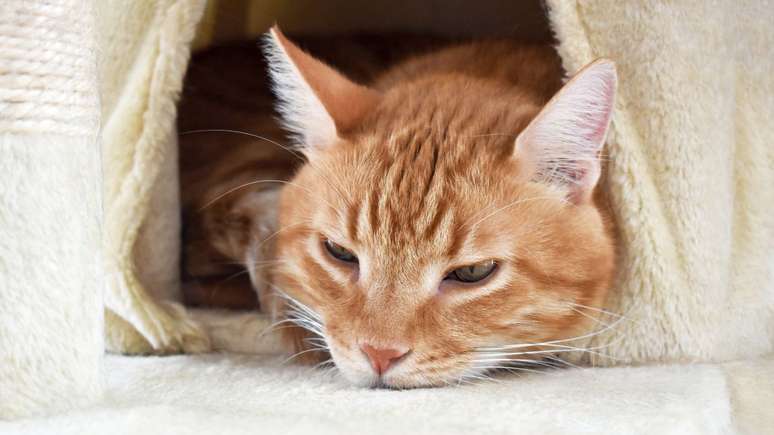Destructive behaviors, excessive vocalizations, and signs of physical stress may indicate that your pet is suffering from this condition.
A Separation anxiety in pets is a behavioral problem that occurs when the animal becomes extremely anxious and stressed in the absence of its owner. This condition is often found in dogs, but can affect felines as well.
According to veterinarian Mariana Raposo, product manager of Avert Saúde Animal, the condition is characterized by a series of physical and behavioral responses presented by the animal when the owner leaves.
“Of multifactorial origin, a series of situations can lead to the emergence of the problem, from traumatic experiences, such as abandonment or multiple adoption, changes in routine, isolation for long periods, adaptation to new environments, among others,” he explains. .
The syndrome directly affects the animal’s quality of life, also affecting its physical health. Increased levels of cortisol (stress hormone) and release of adrenaline caused by pet anxiety are associated with decreased immune system, tachycardia, increased blood pressure, and gastrointestinal changes
Therefore, identifying signs of separation-related disorders is essential to ensure animal welfare. To do this, the professional has listed some clues that may indicate that your pet is suffering from the problem:
1. Destructive behavior
Beyond simply chewing furniture or scratching doors, notice which specific objects your pet’s destructive behavior targets. They often choose items that have their owner’s strongest scent, such as recently worn clothes.
2. Vocalization patterns
Pay attention to the animal’s vocalization patterns. Barking or meowing immediately after the owner leaves and continuing for a prolonged period are clear signs of separation anxiety in pets. Some animals may be silent, but that doesn’t mean they aren’t stressed. It is important to be aware of any changes in vocal behavior.
3. Hyperactive behavior
In addition to simply being elated when the owner returns, notice whether the hyperactive behavior is specifically targeted. If your pet ignores other family members or visitors, focusing all of his excitement on you, it could be a sign of severe separation anxiety.
4. Changes in patterns of physiological needs
Observe your pet’s urination and defecation patterns. If the animal has difficulty just doing its business in the right place or does so even when the owner returns home, this may suggest that the behavior is related to separation anxiety and not to physical health problems.
5. Sign of body stress
In addition to following the owner around the house, watch for other signs of physical stress, such as excessive licking, frequent yawning (which is not associated with tiredness), dilated pupils, and drooping ears. These signs indicate that your pet is feeling uncomfortable or anxious.
6. Change in eating behavior
Refusing to eat isn’t the only sign of food-related separation anxiety. Some animals may exhibit compulsive eating behaviors when alone, quickly devouring food as a way to cope with stress.
7. Triggers
Pay attention to possible triggers for separation anxiety in pets. This can include things like taking your keys, picking up your purse, or putting on your coat, things that the pet associates with the owner leaving. These signals can trigger behavioral changes in the animal even before the guardians leave.
“Understanding these details can help guardians recognize separation-related disorders more effectively, ensuring that the pet receives the support and care needed for a happy and healthy life,” says Mariana.
How to prevent?
Prevention is the best way to prevent the condition from developing. To do this, it is recommended to accustom your pet to solitude from an early age. Additionally, the owner may associate his departure with positive rewards, such as special toys or snacks.
Another important point is to avoid emotional departures, leaving the house calmly and without big goodbyes can reduce the animal’s stress. “With the correct approach it is possible to help animals overcome this anxiety and live in a more serene and balanced way”, concludes Mariana
Source: Terra
Ben Stock is a lifestyle journalist and author at Gossipify. He writes about topics such as health, wellness, travel, food and home decor. He provides practical advice and inspiration to improve well-being, keeps readers up to date with latest lifestyle news and trends, known for his engaging writing style, in-depth analysis and unique perspectives.







